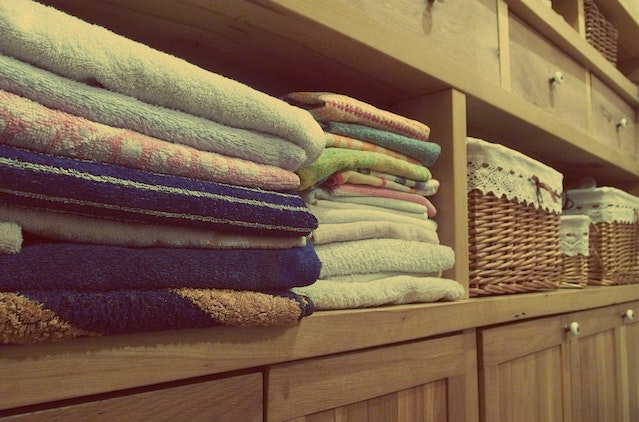Should I Rent My House Furnished?
Deciding whether to rent your house furnished or unfurnished is a common dilemma for many property owners. It’s a decision that can significantly impact your rental experience, attracting a specific target market and influencing your return on investment.
Renting a furnished house can offer several advantages, such as attracting a different tenant demographic and potentially commanding higher rental rates. However, it also comes with its considerations, such as increased responsibility for maintenance and the risk of potential damage to the furniture and furnishings.
In this article, we will help you make an informed decision as a landlord by exploring the pros and cons of renting your house furnished. Continue reading to gain valuable insights and clarity for your rental property journey.
What are Furnished Rentals?
Furnished rentals are residential properties equipped with furniture, decor, appliances, and other essential amenities for tenants. These properties are thoughtfully curated and designed to provide a comfortable and functional living space.
Furnished rentals typically include many amenities and furnishings to ensure a comfortable and enjoyable stay. These may include:
- Furniture, including beds, sofas, tables, and chairs
- Appliances such as stoves, refrigerators, and microwaves
- Kitchenware, including dishes, utensils, and cookware
- Linens, towels, and bedding
- Electronics like televisions and sound systems
- High-speed internet connectivity
- Cleaning supplies and equipment
- Outdoor furniture or access to common recreational areas
Benefits of Furnished Rentals
Renting out a furnished property has many benefits that tenants enjoy. They can also bring in a higher ROI for the landlord.
Convenience for Tenants
Furnished rentals provide convenience and comfort to tenants as they come fully equipped with necessary furniture, appliances, and essentials.

Tenants can move in immediately without the hassle and expense of purchasing or transporting their own furniture.
Attracting a Wide Marker
Furnished rentals are highly attractive to a diverse spectrum of tenant demographics. They are particularly attractive to individuals or families who are relocating, students, corporate professionals, or those needing temporary accommodation.
Higher Rental Income
Furnished rentals often command higher rental rates compared to unfurnished properties. The added value of furniture and amenities allows landlords to charge a premium for the convenience they provide. This can lead to increased rental income and higher returns on investment.
Reduced Vacancy
With furnished rentals, the time it takes to find a tenant and fill vacancies is often shorter. The appeal of a ready-to-move-in property can attract tenants who are seeking immediate housing solutions. This can minimize vacancy periods and ensure a steady rental income stream.
There are many risks associated with having a vacant rental property that as a rental property owner you want to avoid.
Flexibility for Landlords
Furnished rentals offer flexibility for landlords who want to switch between short-term, or month-to-month leases, and long-term rental strategies. They can easily transition from short-term rentals, such as vacation rentals, to long-term rentals if the market conditions change.

This adaptability allows landlords to adjust their rental strategies as needed.
Low Cost for Tenants
Renting a furnished property can save tenants significant upfront costs. They don’t have to invest in purchasing furniture or household items, which can be particularly beneficial for those with temporary housing needs.
Drawbacks of Furnished Rentals
While furnished rentals offer convenience and ease for individuals seeking temporary housing, it’s important to be aware of potential drawbacks that may arise.
Limited Personalization
One of the main drawbacks of furnished rentals is the limited opportunity for tenant personalization. Since the furnishings and decor are pre-selected, tenants may find it challenging to create a space that reflects their unique style and taste.
Higher Rental Costs
Compared to unfurnished rentals, furnished rentals generally come at a higher lease cost. Furniture, appliances, and other amenities increase the overall rental price.
While this may be justified by the convenience of not having to purchase and transport furniture, individuals on a tight budget may find furnished rentals less financially feasible.
Wear and Tear
Furnished rentals are more susceptible to wear and tear due to the constant turnover of tenants. While property owners typically maintain the furnishings, there is still a risk of encountering items that are not in optimal condition and then must be replaced.
Limited Storage Space
Furnished rentals often come with limited storage space for tenants’ personal belongings.

With pre-existing furniture and appliances occupying the rooms, tenants may struggle to find adequate storage.
Compatibility Issues
Each individual has unique preferences when it comes to comfort and functionality. While furnished rentals aim to cater to a wide range of tenants, there may be instances where the provided furniture and appliances do not align with personal needs.
Factors to Consider
When deciding whether to offer furnished rentals, there are several key factors to take into account:
Market Demand and Rental Trends
Evaluate your area’s current market demand and rental trends. Research the preferences of tenants and analyze the demand for specific types of furnished or unfurnished rentals. This step will help you determine how much demand your rental property might have.
Property Location and Target Tenant Demographic
Consider the location of your property and your target market. Assess whether the property’s location and features align with the preferences and needs of your target tenants.
Understanding the target demographic will assist you in tailoring your rental property to meet their expectations.
Personal Preferences and Investment Goals
Reflect on your preferences and investment goals. Consider whether offering furnished or unfurnished rentals aligns with your preferences and long-term investment objectives.
Final Word
Furnished rentals offer landlords and tenants several advantages, including flexibility, convenience, and cost savings. However, there are potential drawbacks that landlords should consider before deciding between a furnished or unfurnished rental property.
Carefully evaluating your local market demand, location, target demographic, and investment goals will help you determine the best rental strategy for your property.
Whole Property Management can provide expert advice and solutions to maximize your rental income. Contact Whole Property Management today to learn more about our services.
